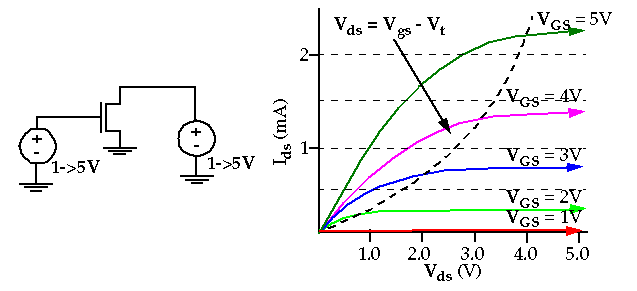

In this chapter we will primarily be using n-type transistors (NPN, NMOS) in the example circuits. The remaining terminal is what is thus common to both input and output. The easiest way to determine if a device is connected as common emitter/source, common collector/drain, or common base/gate is to examine where the input signal enters and the output signal leaves.


This leads to the names common emitter, etc. This means one of the transistor terminals must be common to both the input and output circuits. Representing the basic amplifier as a two port network as in figure 9.1, there would need to be two input and two output terminals for a total of four. If true, then there's no way that Shockley could publish systems of equations demonstrating that Vbe determines the BE potential barrier, and hence controls Ie and Ic.The transistor, as we have seen in the previous chapter, is a three-terminal device. What to do? Easy: declare that BJTs are current-input, totally different than vacuum tubes (and different than Lilienfeld's MOSFET,) then hype the hell out of it constantly and everywhere. Patent reviewers and judges might not see any major difference between 1945 BJTs and the 1925 FETs, and reject the Bell Labs patents based on prior art. Why did William Shockley describe BJTs as current-driven devices? Why is it called "Ebers-Moll equation," when Shockley damn well should have written their paper instead? Maybe he just didn't see? Speculation: Shockley well knew that BJTs were transconductors, but he was terrified of having his patents thrown out, because the transistor had been patented 20 years before, and it was an FET. (It was! Total blasphemous concepts, where BJTs are voltage-input stages and hfe is irrelevant.) Those trapped in "hfe-think" will look at the internal schematic of LM741 and recoil in confusion, as if it was designed by alien minds, or perhaps satan himself. The entire thing was a giant op-amp constructed from discretes! This to provide ideal bass response going down to DC, with no capacitors needed to separate the several AC gain stages. (Heh, I repaired someone's high power audio amp. So, don't design with capacitor-isolated CE stages design with diff-amp stages. The same issues apply to BJT designs, where we can view Ib as being an unwanted leakage current. It's a bad design based on gate current rather than gate voltage. Now breathe on it, or take it outdoors, and the change in humidity (surface-leakage) will drive it crazy.
Bjt transistor beta infinite meaning series#
What's the 'beta' of a JFET? Hey everyone go design a JFET common-source amplifier with a large series resistor on its gate lead, then feed it a voltage signal which creates the correct number of picoamperes when given an input bias of, say, 24V. (Ideally base thickness would go to zero, giving infinite BE impedance, yet not experience punch-through.) Perhaps even current-mirrors would still work (by transferring a Vbe, with infinitesimal current? Hmm.) In other words, look inside any BJT op-amp, and check whether any of the stages will malfunction if the Ebers-Moll equation Vbe->Ic still applied, yet also the Ib became zero for all values of Vbe.Īlso, go read the BJT chapters of Art of Electronic textbook, which counsels us to avoid the distorted hfe-based thinking taught in technician courses.Įngineers instead treat BJTs as voltage-input devices, where beta represents an unwanted leakage factor, a non-infinite input impedance caused by non-ideal base thickness. All these have FET versions, and all would work better if Ib=0. Same with emitter-follower, cascode amps, etc. Your infinite-beta diff-amp won't have any input bias current, similar to MOS-input op-amps, yay. Differential pairs are based on voltage-input, Vbe1-Vbe2.

So, doesn't this mean that modern signal-level BJTs must always be cut off? And, we should only use 1950s BJTs with their low betas? Of course not. The "ideal" realworld BJT has a beta not of two, but 200 or more.


 0 kommentar(er)
0 kommentar(er)
